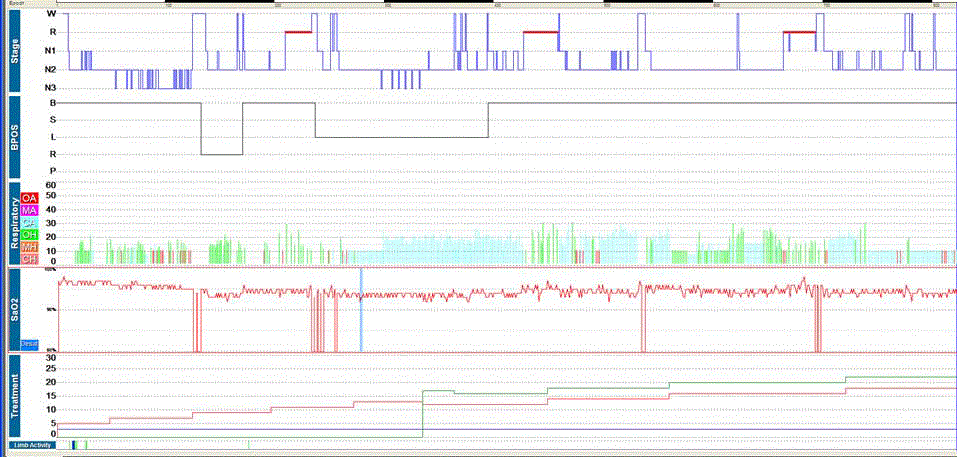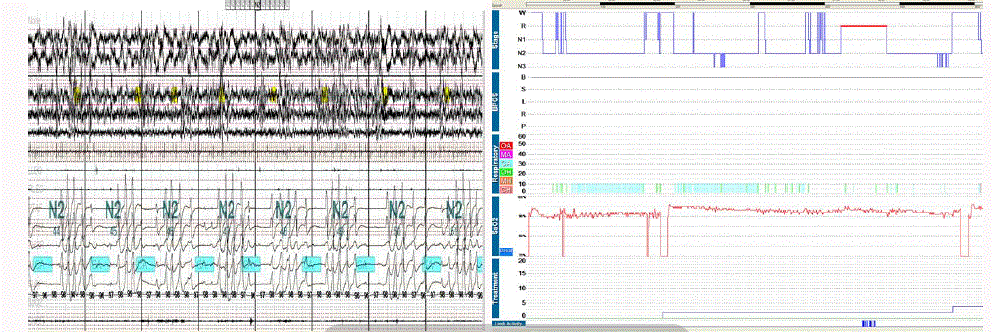Clinical Image
Patient with Chronic Pain and Sleep Disturbance
Abbas H, Edward S, Mukkavilli V, Anees F, Saleeby K and Chowdhuri S*
Department of Sleep Medicine, John D. Dingell VA Sleep Wake Disorders Center and Wayne State University,
Detroit MI, USA
*Corresponding author: Susmita Chowdhuri, Department of Sleep Medicine, John D. Dingell VA Sleep Wake Disorders Center and Wayne State University, 46446 John R, Detroit, MI, USA
Published: 29 Jun, 2017
Cite this article as: Abbas H, Edward S, Mukkavilli V,
Anees F, Saleeby K, Chowdhuri S.
Patient with Chronic Pain and Sleep
Disturbance. Clin Surg. 2017; 2: 1526.
Abbreviations
AHI: Apnea/Hypopnea Index; ASV: Adaptive Seroventilation; BPAP: Bilevel Positive Airway Pressure; CAI: Central Apnea Index; CPAP: Continuous Positive Airway Pressure; CSA: Central Sleep Apnea; qd: Daily; P. Flow: Pressure Transducer Flow; PO: Oral; RE: Respiratory Event; T. Flow: Thermistor Flow; EEG: Electroencephalogram; EOG: Electrooculogram; EKG: Electrocardiogram; OA: (red bars): Obstructive Apnea; OH: (green bars): Obstructive Hypopnea; CA: (blue bars): Central Apnea; Thorax/Abdomen: Thoracic and Abdominal Respiratory Inductance Plethysmography; SaO2: Oxygen Saturation via Pulse Oximetry
Clinical Image
A 62-year-old gentleman was referred to the sleep clinic for evaluation of sleep apnea. His
chief complaints were frequent awakenings from sleep, snoring and gasping. Past medical history:
hypertension and COPD. Medications: Lisinopril PO 10 mg qd, Symbicort inhaler BID and
methadone 55 mg PO qd.
BMI: 29, Oropharyngeal exam: Mallampati score IV, lateral narrowing, no tonsillar hypertrophy
or macroglossia, normal nasal turbinates; otherwise unremarkable exam 2D echocardiogram:
ejection fraction 65% (Figure 1).
Q1. What is the likely diagnosis?
Q2. What is the next step in the management?
Answer 1. Central sleep apnea (CSA) is due to medication or substance (narcotic or opioid
induced CSA) (ICSD-3).
PSG showed: AHI: 24.5/h, CAI: 20.3/h.
Answer 2. Patient underwent titration but continuous positive airway pressure (PAP) alone,
CPAP plus oxygen and bilevel PAP with oxygen did not eliminate central apnea (CA) (Figure 2).
ASV alone was ineffective but addition of oxygen to ASV reduced central apneas. Patient was also
advised to taper and stop methadone (Figures 2 and 3).


